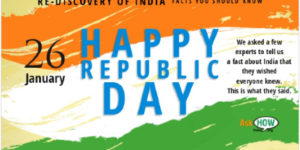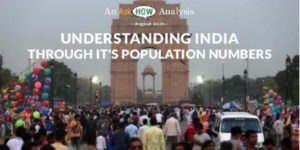How can tax departments be less taxing for Businesses? (REODB 4)featured
Authors: Shankar Subramanian and Yogesh Upadhyaya
Around ten years ago, the CFO of an international semiconductor giant shared a startling statistic in an internal meeting. His company was fighting a total of 22 tax cases in the US in various stages of appeal. By contrast, the same company in India had over 25 tax cases in litigation in various fora. The sales in India were 5% of the US sales and the company had been in India for around 15 years whereas it had been in the US for over 40 years since its inception. This anecdote underscores an important aspect of tax administration in India — excessive and prolonged litigation with no sight of closure. Even while India has rationalised its tax rates and simplified the processes, the unpredictability of rule changes and prolonged litigation are dampeners for any business. These are often not captured in the statistics used in Ease of Doing Business. In this post, we will cover how and why businesses get hassled by tax authorities and what can be done about it. Let us begin with litigation.

The issue of prolonged tax litigations is multi-factor. The problem starts with the way the government computes its revenue. Unlike most businesses, which follow accrual based accounting, governments follow a cash method accounting. This means that whatever amounts the government receives in a year is counted as a revenue and whatever it spends is counted as an expenditure. So, if a business pays a part of a disputed tax demand, it is accounted as revenue in the year it is paid. If in the subsequent year the tax payer gets a favourable verdict in a court, it is accounted as a refund/ expense in that year. A respectable business running on accrual accounting would not account for such disputed part payments as income especially when they are in litigation.
The cash method of accounting for government finances is not unique to India. Most countries use this method. However, in India the problem is compounded by the unrealistically high targets set for tax collections. The unreasonable tax targets lead to many of the high, and at times unreasonable, demands. The businessman is forced to make a part payment. When he goes for an appeal, he often wins at higher level and the government is forced to refund in a subsequent financial year. This Kafkaesque process is supported by how the government evaluates the performance of its employees in tax department.
One of the authors (Shankar) was the finance manager in a soft drinks bottling plant in Maharashtra a few years ago. During the course of an audit by the Central Excise department, one of the inspectors pointed out that the unit was not paying excise duty on the glass scrap generated. The team replied that three different case laws in two high courts and one tribunal in other states had held that glass scrap generated in bottling plant was not subject to excise duty. The inspector’s retort? Courts in Maharashtra might take a different view! Later, when pressed for the real reason behind his stance, the officer admitted off the record that the company’s view was correct and advised us to pay under protest and file an appeal. His reason for being adamant was career progression. He did not want his superior or auditors to be under the impression that he was soft on any tax payer. He felt it would be a career limiting move. The amount was not high and the company’s appeal was upheld at the next level. But this was a complete waste of time for both the company and the tax department. This is a great example of government revenue accounting and consequent incentives for employees of the tax department.
These kinds of incentives lead to a plethora of litigation, many times for really small amounts. Economic Survey 2018, pointed out that as of March 2017, there were approximately 1,37,176 direct tax cases under consideration at the level of the Income Tax Appellate Tribunal (ITAT), high courts and Supreme Court. Just 0.2% of these cases constituted nearly 56% of the total demand value. On the flip side 66% of pending cases, each less than Rs. 10 lakhs in claim amount, added up to a mere 1.8% of the total locked-up value of pending cases.
The tax department personnel are evaluated mainly on their tax collection efforts. The targets are set at the beginning of the financial year and are a function of the expected nominal GDP growth that the government expects in the financial year. If there is any economic slowdown (which no tax department can ever control/ predict), the targets become too steep and that leads to high pitched demands. Often the tax departments cajole the tax payers to pay excess tax in the month of March to meet their targets. This then gets refunded in Apr/ May and creates a steeper asking rate in the next year. One way to alter this is to set targets differently and not include any disputed payments towards meeting of targets. Another way could be to give more emphasis on adding new taxpayers and expanding the tax base.
The incentives for officers in India are so strong that they appeal even decisions made by their own officer. In all tax disputes, we have four levels of appeal. The first appeal is within the department itself , followed by an Appellate Tribunal, the High Court and then the Supreme Court . The first level of appeal is usually heard by an officer designated as Commissioner (Appeals). Most often, he sides with the tax department for career progression reasons. In the rare cases that he upholds the view of the taxpayer, the department often goes in appeal against his decision. Inevitably such cases fail at the next appellate level too but it prolongs the agony of the tax payer and results in a waste of judicial time. The Economic survey of 2017–18 gave some numbers on the Direct Tax side. It said that the tax department is responsible for filing over 80% of the appeals. Also the tax department loses nearly three fourths of the cases at appellate stages ( 73% in Supreme Court, 88% in High Court and 74% in Tribunal). Why would this be allowed ? That brings us to the third issue — Oversight and Audits .
Tax officers in the country are scared of the three Cs. Central Vigilance Commission (CVC), Central Bureau of Investigation (CBI) and Controller and Auditor General of India (CAG). Officers feel that they cannot take any action that would be perceived as being pro-business because any of the three Cs may remark adversely on it.
The reader must note here that the authors are not making the case that the tax department is always wrong. It is believed that there is considerable tax evasion in the country. At times the wrong doers can engage in outright fraud in order to dupe the government. For example, businessmen were known to create fraudulent gate passes to claim that their supplier had already paid Excise Duty on their input material. A few such instances became the reason for Excise Department officers finding minor faults and rejecting gate passes even for legitimate entries. Thankfully, this kind of fraud is much more difficult with the introduction of Goods and Services Tax (GST). The GST paid is recorded in a centralised system and it is very easy to verify any credit claimed for tax paid on any input. This reduces both, tax evasion and reasons for the tax department to harass innocent businesses. This success of GST gives us a clue to what would be most effective measures.
Systemic changes that reduce the possibility of tax evasion are perhaps the best way of reducing harassment by tax officers. However, such changes are necessary but not sufficient. There have to be incentives both at government and at individual officer level to ensure less harassment and litigation.
So what can be done to make life of business people easier? What measures would result in Real Ease of Doing Business? Given below is a non-comprehensive list.
1. Exclude any tax / penalty paid under protest by tax payer from the achieved targets of the department. In most disputed cases the tax payer who disputes has to pay at least 50% of the demand when he goes in appeal. This amount is taken as revenue for the year and refunded in the year when the tax payer wins the appeal (along with interest).
2. Maintain a record of each employee that shows how many appeals initiated by the employee were lost by the department. Make this record a significant part of the employee’s performance evaluation.
3. Measure department targets not just on revenue collected but also in bringing in new taxpayers into system
4. Have stricter norms for appeal including independent legal opinion on the merit of the taxman’s stand.
5. Regularly publish number of cases being litigated by tax departments at different levels.
There are many other suggestions made by different bodies including the Economic Survey of 2018. These are not easy for outsiders to monitor however. Ministers can make announcements. It would take an enlightened and empowered bureaucracy backed by a visionary minister to implement such suggestions and find out what works. This is hard slog. Something not easily captured in newspaper headlines or Ease of Doing Business Rankings.
You can follow Shankar Subramanian at www.linkedin.com/in/shankarsubram
Author –
Yogesh Upadhyaya
(Yogesh Upadhyaya is one of the founders of AskHow India. Blogs are personal views.)
You can follow AskHow India (@AskHowIndia) or me (@YogeshUpadh) on twitter or me on LinkedIn or Medium. DM me if you wish me to put you on WhatsApp distribution list.



